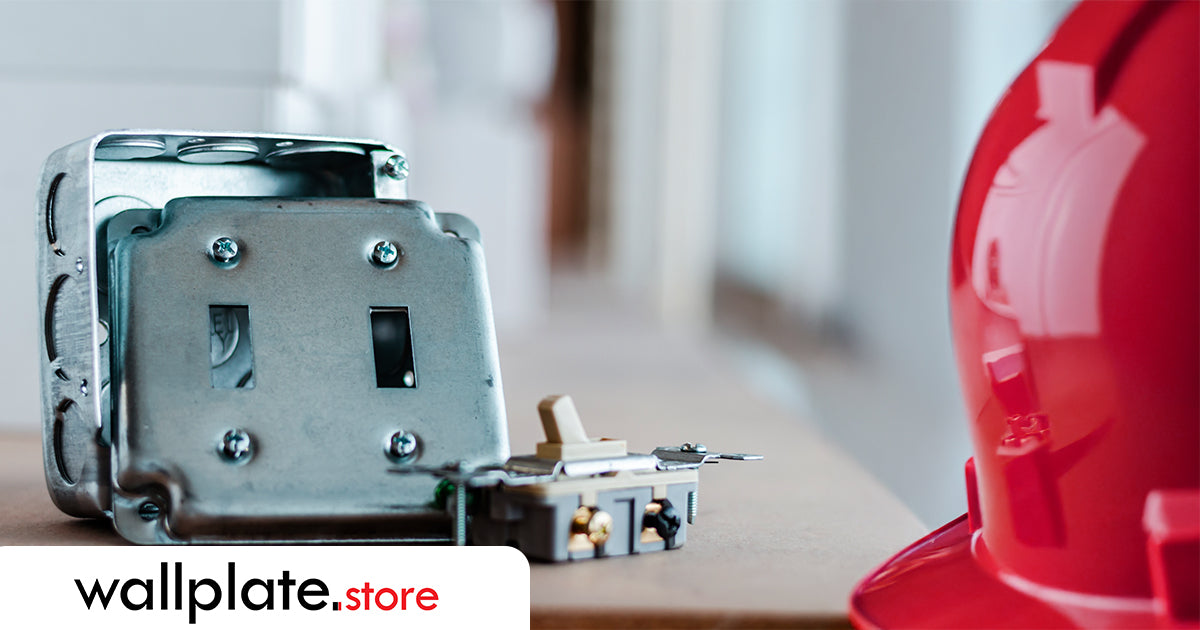Have you ever found yourself struggling to install a 4x4 inch metal wallplate on a plastic 4 inch blue electrical box? You're not alone. Many customers who work on DIY electrical projects encounter this issue when they lack the necessary skills and knowledge to complete the installation safely and effectively.
The other day, a customer gave us a bad "product review" on our Amazon marketplace. The customer ordered 4"x4" metal wallplates that are designed to be installed on 4" square metal electrical boxes. These metal wall plates have 4 holes, one at each corner, also referred to in the industry as "crushed corners". The electrical boxes they are install on, come with two corners that have a tabbed screw hole, used to install the wallplate onto the box. The idea of these wallplates, is that you install the electrical wiring device (like a receptacle outlet), onto the wallplate, and then it is much easier to intall the wallplate, with the wiring device already installed, on to the electrical box. But our dear ustomer complained in his product review that the electrical wallplate/switcplate was not compatible to his 4" blue plastic electrical box. Hello!!! If you are going to work on electrical work, at least you should have the basic knowledge that these wall plates are not meant for plastic boxes designed to have the wiring devices intalled first on to the electrical box.
Why is Installing a Metal Wallplate on a Plastic Electrical Box Challenging?
The main challenge arises from the fact that metal wallplates are typically designed to be installed on metal boxes, commonly found in industrial settings. The process involves first installing the electrical device on the wallplate and then attaching the wallplate to the metal box. However, with plastic electrical boxes, the standard practice is to install the electrical devices, such as plugs and switches, directly onto the box and then use a wallplate to cover them.
Common Issues Faced by DIY Enthusiasts
Customers attempting to install metal wallplates on plastic electrical boxes often encounter difficulties due to the mismatch in design and installation process. This can lead to frustration and confusion, as the wallplate may not fit properly or securely onto the plastic box, compromising the safety and functionality of the electrical setup. We love DIY's, in fact, they are our best customers. However, if you want to be a DIY's and work on electrical projects, at the very minimum, you should have a very good understanding of electrical circuits and how to install electrical devices, like electric outlets and switches.
Ensuring Safe and Proper Installation
For those facing this challenge, it is essential to seek guidance from professionals or experts in the field to ensure a safe and proper installation. Understanding the differences between metal and plastic electrical boxes, as well as the correct installation procedures for each type, is crucial in avoiding potential hazards and ensuring the longevity of the electrical system.


